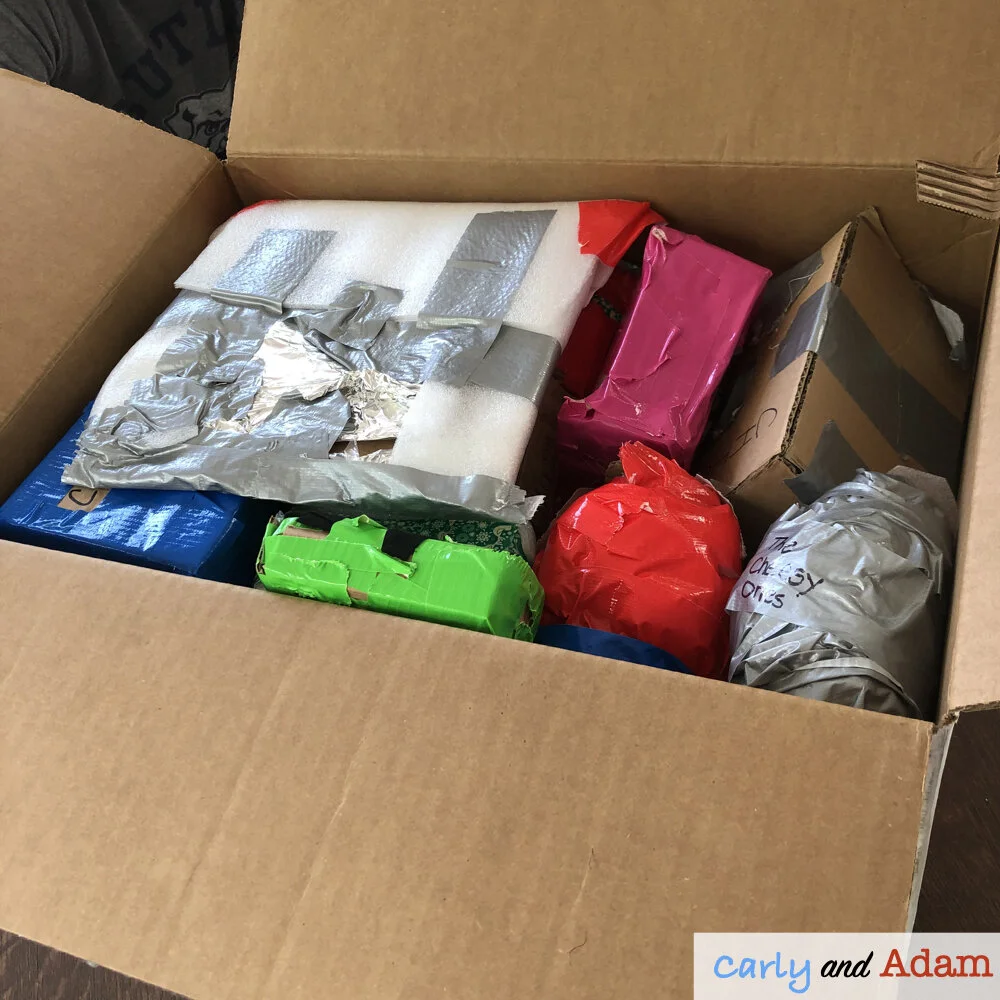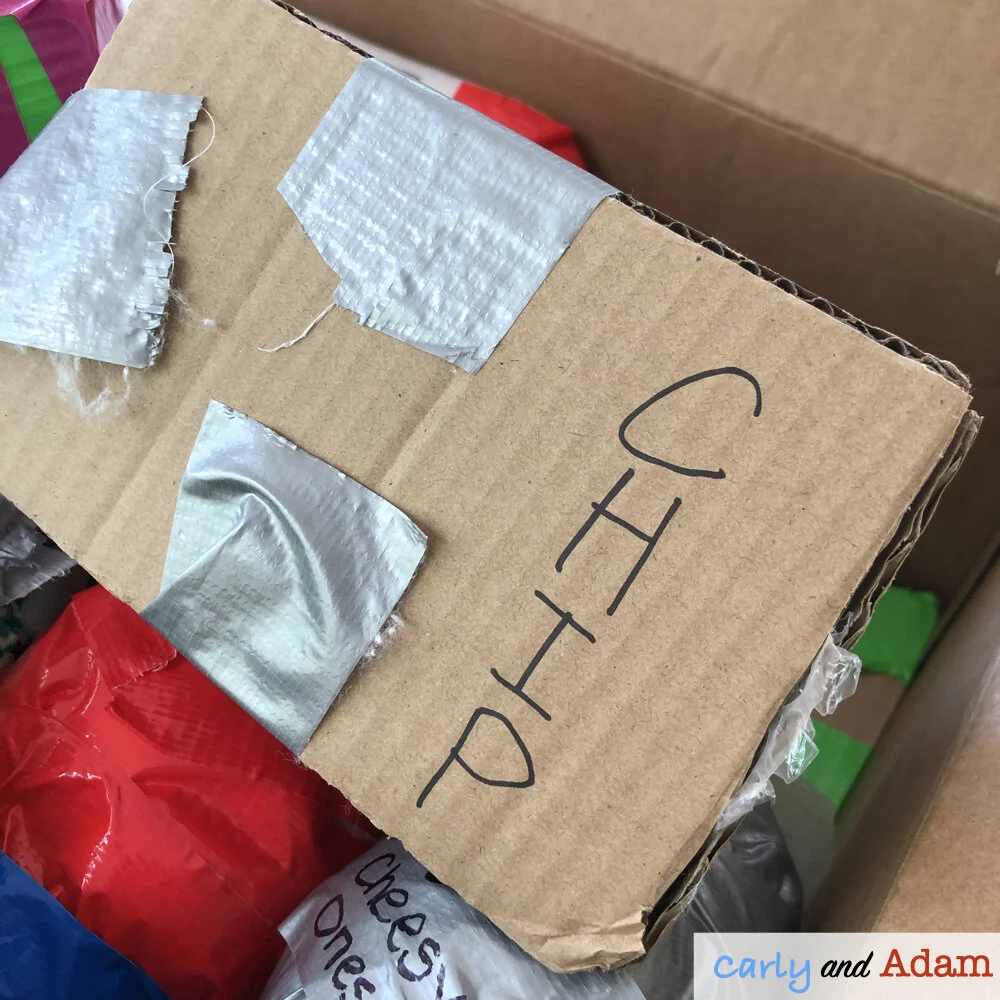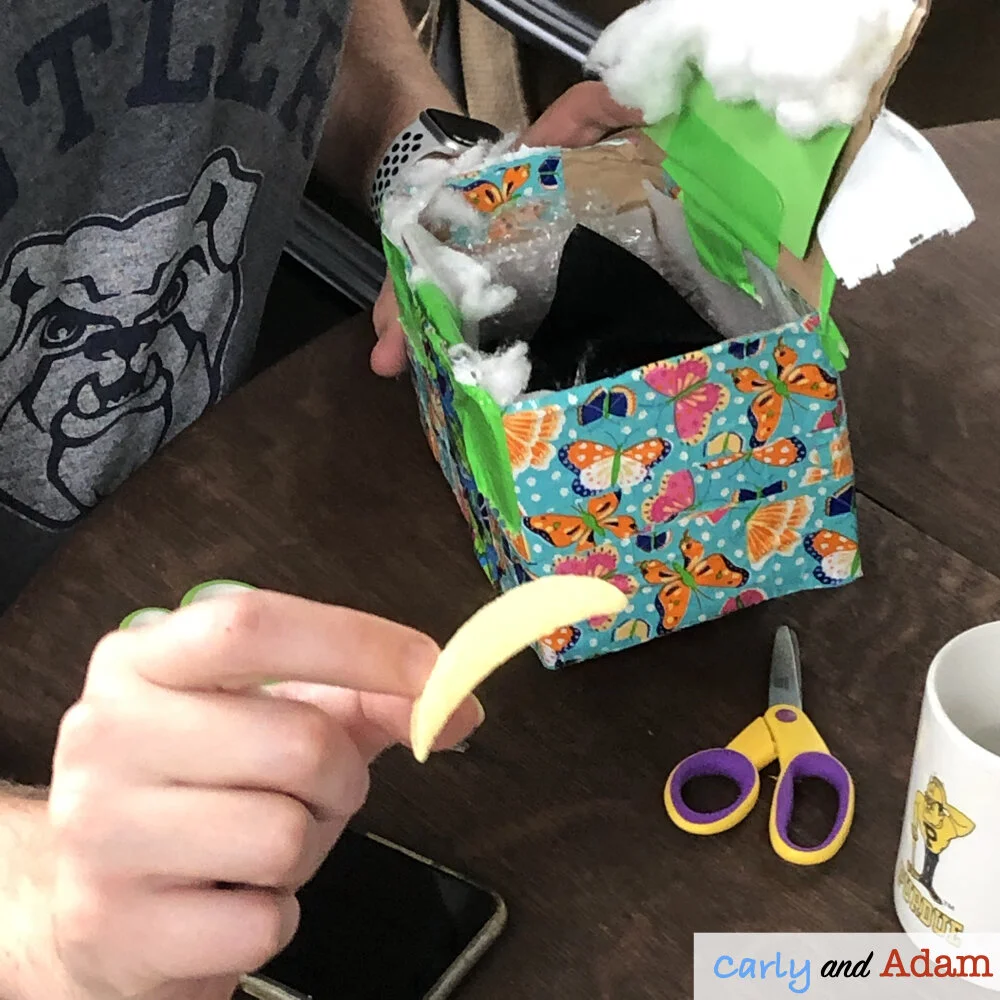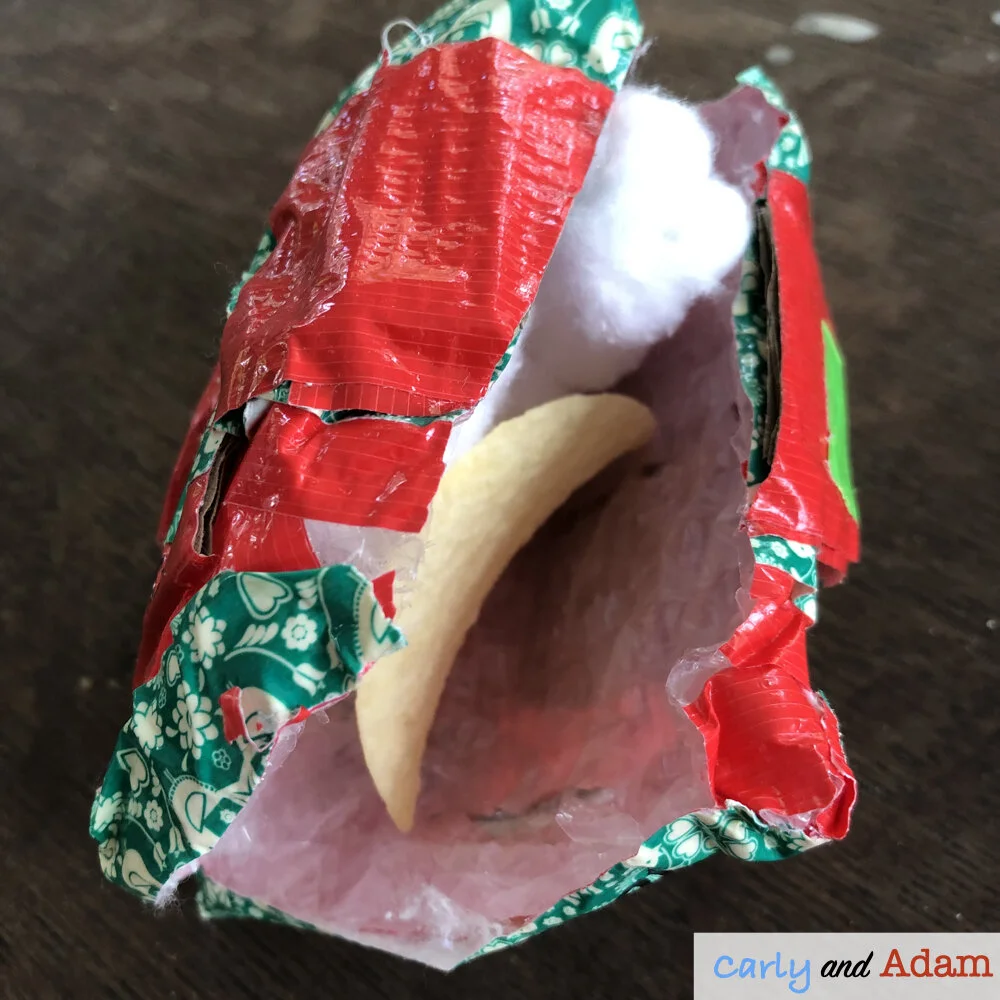Ship a Chip STEM Challenge (Includes FREE Challenge Sheet)
Can your students ship a chip?
We challenged teachers in our Elementary STEM Teachers Club Facebook Group to accept the “Ship a Chip Challenge” during a book study on STEAM Makers: Fostering Creativity and Innovation in the Elementary Classroom by Dr. Jacie Maslyk.
The Ship a Chip Challenge is an engineering design challenge in which students create packaging for a single potato chip so that it can be mailed to another class without breaking.
This challenge requires simple materials and is fun to complete with a buddy classroom at another school.
Your students will be challenged to engineer packaging keeping in mind the fragile product, available resources, and the shipping process. Students will plan, create, test, and evaluate the outcome of their package design.
SHIP A CHIP STEM CHALLENGE MATERIALS
Material List (for each group of 2-4 students):
*Materials can vary depending on what you have available.
1 Potato Chip (Pringles® or Lay’s Stax® work best)
Paper/Cardstock/Newspaper
Tape
Felt
Foil
Cardboard
String
Cotton Balls
Plastic Wrap
Tissues or Paper Towels
Toothpicks
Popsicle Sticks
Pipe Cleaners
Pencils and Challenge/Score Sheet
SHIP A CHIP DETAILS:
Transform your elementary STEM learners into packaging engineers. The Ship a Chip challenge offers many real-world applications using classroom education to solve real-life problems.
What Does a Packaging Engineer Do?
Packaging engineers have a very important job within every company, big and small. Every item we purchase has been packaged. The packaging might look different depending on the product, but it is a very important part of getting the product from the seller to the buyer.
Packaging engineers have the difficult job of making sure the container works for both form and function. They need to be able to successfully package a product that looks like something a customer would want to buy and that delivers the product to the buyer safely all while considering the company’s costs and the route it takes to get to the buyer.
SHIP A CHIP RULES:
Design the smallest, lightest package.
Do NOT each the chips!
You may only use the materials provided.
SHIP A CHIP BACKGROUND INFORMATION:
You might want to discuss:
What do different types of engineers do within the field?
For example: manufacturing engineers vs. packaging engineersWhat are the different packaging options you observe in your daily life?
Review the Engineering Design Process.
How do size and weight affect Post Office requirements and costs?
Additional topics to discuss:
Function vs. Design:
What do you have to consider when selecting packaging materials?
Will the packages be stacked? Bundled? Stored?
Delivered by truck? Plane? Forklift? By hand?
What happens if your package ends up on the bottom of a stack of heavy boxes?
How will the recipient feel when they receive your package?
Does your package look nice?
Will your package require detailed instructions for opening?
What will happen to your packaging after the chip arrives at the destination?
SHIP A CHIP INSTRUCTIONS:
Divide your students into teams of 2-4.
Provide the challenge sheet for each team.
Provide each team with their materials.
Review the challenge instructions.
Announce the amount of time allotted for the challenge. (suggested time - 1 hour)
Allow the teams space to begin brainstorming, planning, creating, testing, and evaluating their chip package.
Test as a group and as a class.
Provide the Ship a Chip Score Sheet and score each team.
Allow time for student reflection.
Ship the chips to a buddy class. You can arrange for an opportunity to connect via Zoom for the unboxing.
Once again, allow time for student observation, scoring, and reflection.
Additional Challenge Tips:
Have each team test their prototype within your classroom before designing the final shipping container.
Be sure to label each package clearly with the team name.
Test the mailing process prior to actually shipping the chips. Place all of the team packages within one large box. This will create an environment similar to the actual shipping process. Allow the packages to bump around inside the box and have each team evaluate the outcome of this simulated shipping experience. Make packaging adjustments, if needed.
One hour is the recommended time frame for this challenge. Older students will be able to complete this challenge in one class period. Younger students or shorter class periods may need to have this challenge divided into multiple class times.
SHIP A CHIP SCORING:
Creating a package and shipping the chip is only part of the fun. An important piece of this challenge is to connect with another classroom for the unboxing and observation piece of this process.
Your students can score their own package or a package belonging to another team.
Here’s the scoring and evaluation process:
5 Points Perfect chip!
4 Points Slightly damaged (edges cracked but still in one piece)
3 Points Broken in half
2 Points Broken into 3-5 pieces
1 Point Broken into 6 or more pieces (crumbled)
Your students will use the score sheet to assess the package and reflect on what went well and what didn’t.
Real-World Solutions Using STEM
Imagine your classroom buzzing with creative students excitedly working away on solving problems that matter in everyday life with STEM! Real-world problem solving should be at the core of any STEM education program. It increases student buy-in as students realize that their work has an impact that extends beyond the classroom walls.
This challenge is designed to excite and inspire the next generation of engineers. Challenge your students to “Ship a Chip” and watch the engineering design process unfold.
For more STEM ideas, inspiration, and collaboration with other STEM teachers be sure to join our FREE Facebook group Elementary STEM Teachers Club!
We hope you have found this blog post helpful. To stay connected with Carly and Adam's teaching tips and classroom freebies be sure to follow us on Facebook, Pinterest, Teachers Pay Teachers, and subscribe to our blog!






